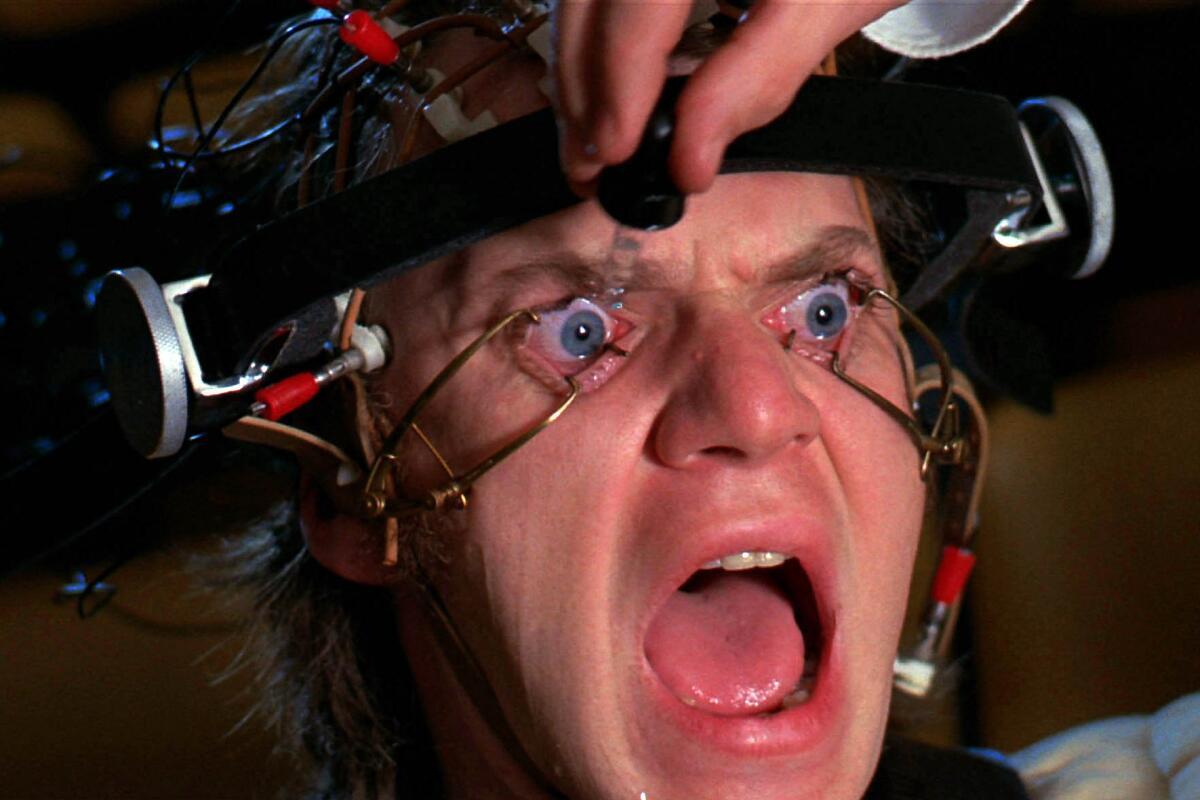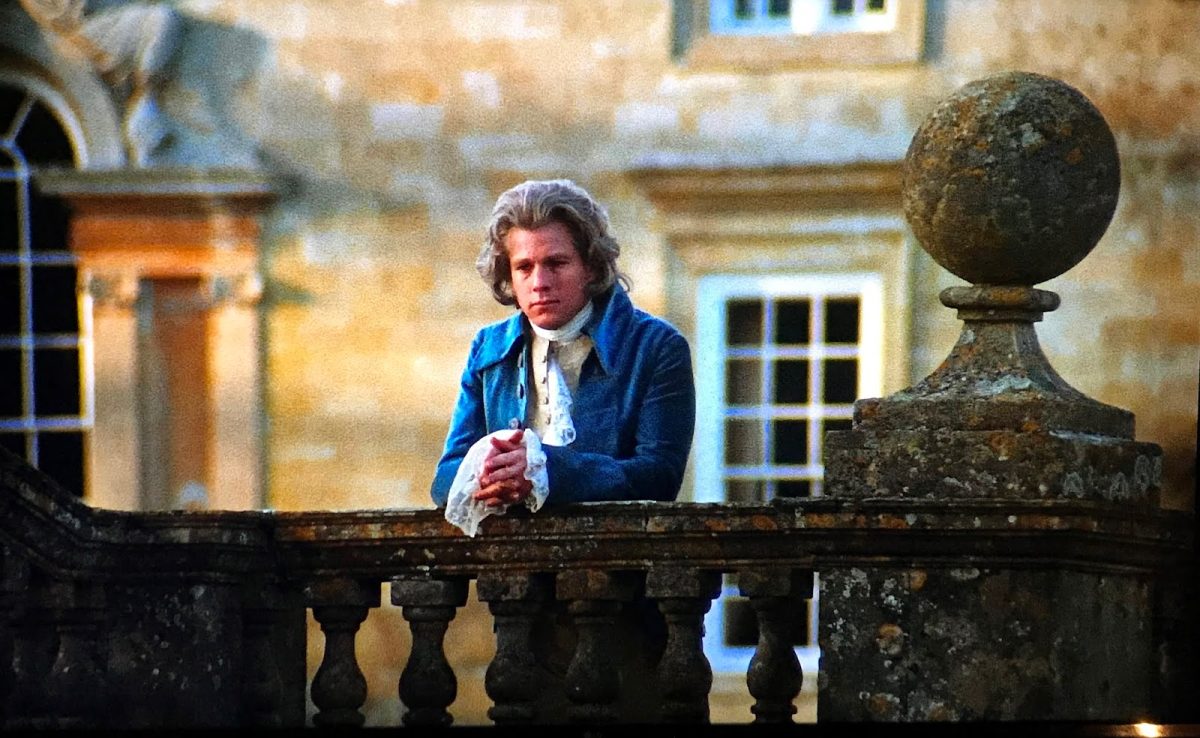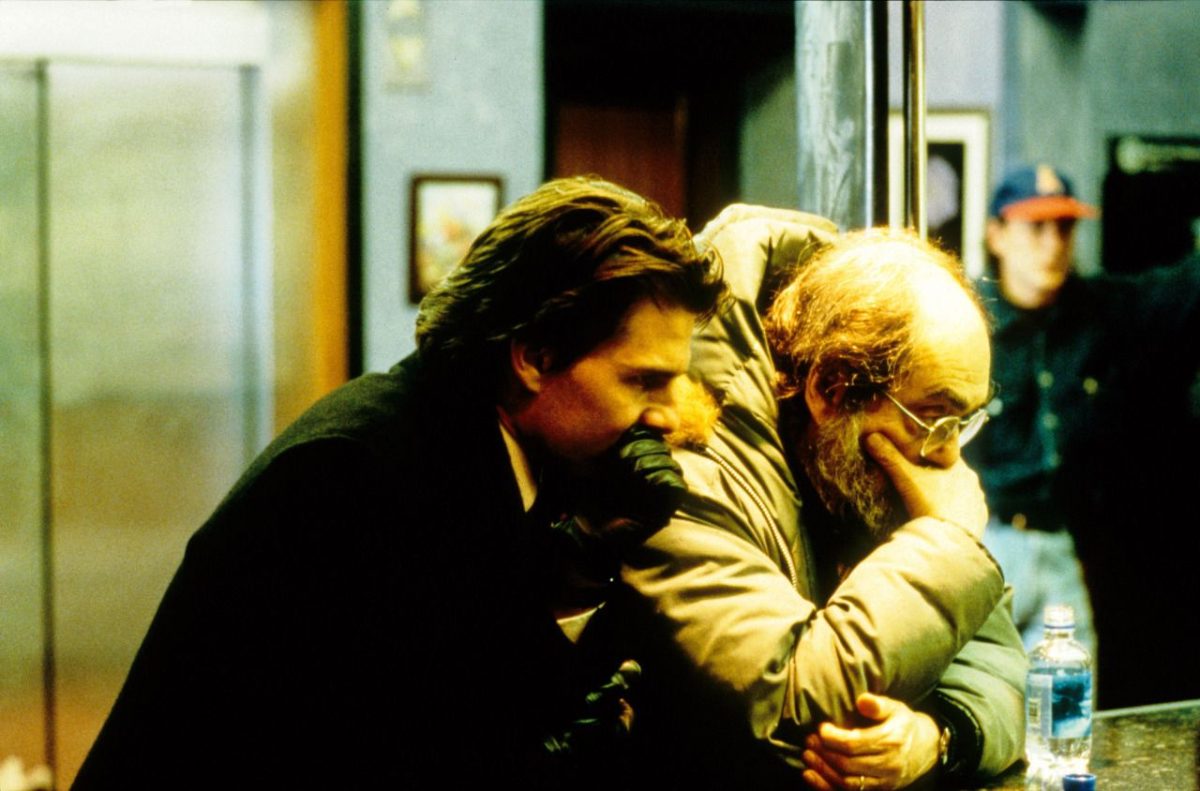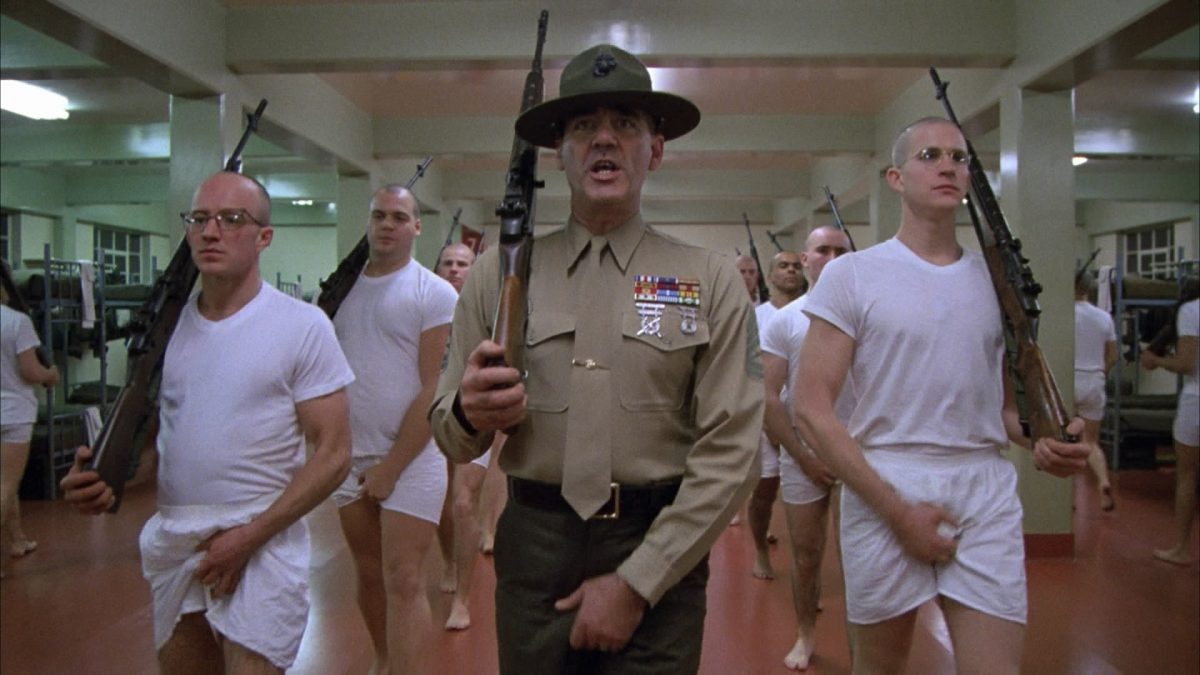In the following essay, Miers asserts that “to understand Kubrick s achievement one must attempt a reading of the mass-market book on which it is based.”
Paul Miers
This orbe of starres fixed infinitely up extendeth it self in altitude sphericallye. and therefore immovable the pallace of foelicitye garnished with perpeluall shininge glorious lightes innumerable, farr excellinge our sonne both in quantitye and qualitye, the very court of caelestiall angelles devoid of greefe and replenished with perfite endlesse joye the habitacle for the elect.
—Thomas Digges, A Perfit Description of the Caelestiall Orbes (1576)
Cinema is the continuation of life by other means.
—Hans-Jürgen Syberberg
It is a truism of film criticism that the movies were a visionary dream even before there was an available technology. Perhaps we are all projected from some primordial cell by thirty-second commercials for catching the upperly mobile Hegelian spirit, but this pop cliche only distorts the real piece of work behind the history of film. It is one thing for every child to invent anew the magic of the Thaumatrope, a name coined by Dr. John Paris in 1825. by which ostensibly dead images appear and disappear with an independent life; it is quite another for Méliès, Porter, and Griffith to work their way through to a radically new poesis where optics could transcribe the physics of experience into psychic structures. Even if all moving images are. in themselves, hallucinatory drugs, the triumph of film as an art and a commercial success has always resulted from control over hallucination. The feature narrative won out over the economics of the peep show, so that today it is not difficult to understand why audiences refuse to pay $3.75 for Dionysian cinema: you can get the same effect by pressing your finger against the corner of your eyeball.
Popular film is socially radical because it is both infantile and conservative, that is it provides a safe recollection of our earliest desires to exceed the limits of time and space. Film inherently lives off its own history, but it consumes that history with countless remakes. Audiences not only wanted three-reel narratives, but they wanted a new one each week. Given this technological construction of the new, the historian is surprised that avante-garde stylistics have had so little effect on the history of film. But then it was the genius of film that so many other avant-garde media strove to imitate. The great masters of early film were neither accidental auteurs nor dreamers. They intentionally labored under the limits of local conditions to discover the technical means for imposing their will on strings of moving images. One thinks of Kuleshov’s students at the Moscow Film School running a print of Griffith’s Intolerance so often that it disintegrated.
If we are determined to have a prefigurative source for the movies in the nineteenth century, it lies more with opera—Emma Bovary going to a matinee of Lucia de Lammamor—than with either literary narrative or painting. The first phase of film history can be written from Wagner and Griffith and leads directly to the front-line masters such as Einsenstein, Murnau, and Dreyer. Their films appear as arrangements of emotionally charged images elevated to the peak of a struggle against the substance of physicality. In Renoir and perhaps Welles there is the beginning of a second phase, now centered in Godard and Brecht. The danse macabre scene in Renoir’s Rules of the Game is prophetic. There an intersection between optic and acoustic modes completes the recoding of the world through film. We can enter the viewing hall for a second transumption, an acknowledgement of the irony of our embedding in this world of shadows and light. Once they are repeated, movies are also a defense against the discovery of a world independent of consciousness; they compel us to believe in somebody’s camera angle as the absolute vantage of Berkeley’s God.
It is ironic then that André Bazin initiated the second phase of film criticism by so often naively valorizing the constructed realism of the mis en scene as if it were indeed the natural cinematic destiny of western epistemology. Upon first watching a Godard film, one was often led by such Bazanian assumptions to think of Godard as an avant-garde radical, when his cutting and editing were actually directed against the shallow conceits of upstart capitalism being forced on our collective episteme. In the place of capital’s secondary codes, Godard prefered his own throw-away jokes, his droll wit; Godard’s cinematic acoustics are entirely Mozartian, as the famous barnyard pan-shot in Weekend so well illustrates.
In Europe today the energy of the post-Godardian heritage has passed to a troika of German directors: Herzog, Fassbinder and Syberberg. They have a shared project largely because they represent a generation of Germans raised without existential memories of World War II and thus compelled to reconstruct a cinematic analogue for autopsy. The sweep of their vision is extraordinary, based on nothing less than a desire to bring back all of Hegel’s Phenomenology as a U.F.A. film, to be able once again to romp under the northern stars and read Heine. Fassbinder is the least cultured and programmatic of the three, always the Marxist street punk; but his most recent The Marriage of Maria Braun lakes itself with a deep earnestness, aspiring to an ironic lyricism one never finds in Godard. At the end of Herzog’s Nosferatu it becomes evident that this color copy of the Murnau original was made in order to provide a psychic correction for the vampire legend: after the bride’s death, the spirit of the vampire passes into the bridegroom who then rides off on a plain of phantasmagorical fog while a heavenly choir sings the Sanctus. This shot completes Herzog’s two-scene commentary on the western psyche which began with the descent of the Spanish from the Andes to the central jungles in Aguirre.
The Germans are unafraid to indulge this cinematic sublime precisely because they do have the abilities to reproduce the old master prints and the strength to acknowledge the originality of the elders. Syberberg is the most self- conscious regarding both the historicity of Western culture and the origins of film. His epic Our Hitler reveals that he has read Walter Benjamin’s dissertation on the Trauerspiel while watching every last nitrate reel from before the war. He overtly names the cinematic source as Edison’s Black Maria, the tar-paper shack in New Jersey where Edison’s hired hand Dickson assembled the first studio. Among other guises, the Black Maria appears in Our Hitler as a tiny figure in one of those glass paper weights that swirls Citizen Kane snow when shaken. It is also transformed into a child’s tear drop, a space ship, a magic lantern stage, an entire catalogue of topoi for elegiac laments over the kitsch of Beethoven in death camps and, by extension, Donny and Marie at the Republican Convention. Syberberg can put together this cinematic rhetoric on the lowest of low-budget productions because he alone controls each detail. For Syberberg the ultimate irony in visionary cinema stems from the belief that we escape from physics into the movies. His Black Maria is both a womb and a sepulchre; our tickets admit us to the spectacle of preservation for those few traces that survive along the time-line of the universe. When watching films we become spectres, the idiotic dead of Rilke as well as Homer. In Syberberg’s universe every frame of every film is a quantum artifact for some event, whose light, once emanated on the stage of a studio, is constantly being extended to include the entire surface of the earth itself. In other words, Hitler was into newsreels very early.
To turn from Europe to America during this past year of volcanoes and MX missles is to realize that there is still no such thing as an American cinema of the second phase. That constantly still-born dream has followed the track of Welles’ career from Xanadu to Paul Masson wine commercials. It is doubtful that a single film-school-bred American director, in between trips to a Beverly Hills bank, could duplicate some contemporary version of Dickson, Porter, or Griffith. After Welles the only relevant genius of American film is Roger Corman, whose methods are now recommended to young directors for reasons of financial expediency as much as aesthetics. Nobody can afford to pay the bills for both drugs and the rising costs of film stock. The assumed “promise” as well as the profits of Coppola’s Godfather cycle have been consumed by the Philippine swamps, and Coppola can find nothing better to do with the expensive destruction of Brando’s mystical temple than to tack it on at the end of Apocalypse Now as part of the credits! George Lucas, grown bored after only one of the Star Drek epics, turns the direction over to a hack who then proceeds to cut every possible comer, assuming an audience with a visual retention span of a happy mongoloid child who can barely manage to roller disco to the long version of “Oh, oh, Sergio.” We are left with Princess Leia, conceived from the lineage of Debbie Reynolds-Eddie Fisher by way of People Magazine. as the reigning muse of the local shopping mall cinema run by a projection robot and teen-agers working for maximum profit and minimum wages. When Variety becomes the largest selling daily in Los Angeles, it will be indistinguishable from the Wall Street Journal. What would happen if Japanese B movies cornered 32% of the suburban market?
Fortunately Stanley Kubrick remains the virtual exception to the demise of Anglo-American film, but it is doubtful that by now much can be done to erase the stock responses of critics when faced with a Kubrick film. He seems to conjure that peculiar strain of American resentment against the notion of an aristocracy of brains fully in charge of things. According to the democratic vistas of our John Ford mythology, we must be given the whole group-rate package, complete with predetermined, significant moments and never be forced to undo our codings in favor of the director’s vision. American films now appear to be edited according to the show and tell school: show us what w’e have just seen and tell us w’hat is coming next.
The easiest way to defend against the centrality of Kubrick’s work is to pretend that he isn’t really an American director at all and therefore can t serve as the bench mark for exposing the slickness of a Steven Spielberg or the dopiness of Paul Mazursky. This defense allows one to raise the charge of technological detachment, which means in Kubrick’s case that he works alone in a foreign studio and only gives interviews to Time magazine when he needs the publicity for a new opening. Princes Leia is nothing but the product of a detached techne, whereas Kubrick is “merely” skilled enough to get exactly the effect he wants by the light of the natural celestial bodies. Thus when you watch a Kubrick film, you arc watching a finely tuned exposure of the artist’s mind. Admittedly. Kubrick is very- severe and cool, but he is also a director willing, matter of factly, to play out the most banal jokes on filmic pretensions (such as starring Ryan O’Neill in Barry Lyndon). Kubrick does not overwhelm scripts with literary reverance as Bertolucci does; rather he consumes them without breaking stride. Any script weaker than Kubrick’s genius is rapidly absorbed and then spread out to fit his archetechtonics.
In Barry Lyndon, for example, he easily cuts through Thackeray’s pseudo-historicism with the worldly voice of an oft-camera narrator and then uses the resonances of Handel’s music in conjunction with visual echoes of Hogarth to expose the baroque undercurrent of neo-classical style. Much of the mid-cult mythopoesis associated with 2001 has been misread into the film from exactly the scenes containing Kubrick’s best jokes. The famous opening cut from savage cave man to space station is. in fact, a fast riff on the whole genre of those H. G. Wells “Parade of Consciousness” newsreels. Arthur C. Clarke’s script offers plenty of nouvelle vague sci-fi. and Kubrick plays along, leaving us with the seamless optics of a mind that can imagine gravitational free fall and the magnetic fields of Jupiter without resort to computer graphics. Since it is possible to accommodate Shakespeare and Ben Jonson. it seems strange not to admire both Fellini and Kubrick.
The Shining is a film that can easily stand on its own merits in Syberberg’s pantheon of worthy footage, but it does demand that the audience renounce dumb mystification before the gothic. However, for better or worse, to understand Kubrick’s achievement one must attempt a reading of the mass-market book on which it is based. Partisans of serious literature will be tempted to write off Stephen King’s novel as a standard piece of pulp fiction, but King’s defenders (a group that must surely include an equal number of MI.A members) only retort by protesting academic priggishness and pointing out how Kubrick has once again ruined the innocent virtues of a cherished text.
The Shining as novel, however, is hardly an innocent venture into the venerable American tradition of Mickey Spillane and Erskine Caldwell. Stephen King comes from a new* school of writing that might be termed “Joyce Carol Oates Meets the Creative Writing Seminar on Tuesdays and Thursdays.” This school is populated by those peculiar products of English Departments who have followed a semester of high Spenserian Moral Allegory with a few courses in the “masters of modern fiction.” King’s brain is not only fed on Jif Peanut Butter and Twinkies, but also great undigested gobs of Poe, Tolkien, and Doris Lessing (not to mention Miss Joyce herself). His primary talent seems to be the ability to convince readers that it is still possible to live in the land of saran-wrap and go gothic with high abandon, entering that realm of shrunken imaginations where every suburban matron can find a guru to insure personal growth, deep mythic experiences, and gynecological health. It is depressing to realize that an entire generation of American writers is now settling into mid- careerism on farms in Vermont or in hot tubs in California, turning out this stuff as if they were investment analysts for Chase Manhattan. They also drink Dewar’s Scotch and read about Ralph Lauren in the Living Section of The New York Tones.
The Shining is one of those books filled with so many purple patches that it would require Herculean effort just to catalogue all the silly ways it discovers to be bad. But at the same time one would have to point out that Kubrick, having red-penciled his way through the optioned source, manages to excise every disaster and salvage some originary luster, all the while having enough wit left over to turn the jokes back on King. In the novel the embarrassingly tortuous attempts to write different interior monologues for each character sound like a musack collage of Proust, Joyce, Faulkner, and Virginia Woolf. Instead of having the wife remember the husband’s graduate-school days when they discussed Restoration drama. Kubrick allows Jack Nicholson to convert the husband into a Famous Writer’s School drop-out with twenty I.Q. points less than he needs to get published even in the little magazines. We are treated to one scene with Shelley Duvall’s magnificent Walker Evans face blankly reading The Catcher in the Rye as if it were a Nancy Drew mystery. In place of King’s predictable device of having the husband working on a play-within-the-novel about his own psychological past as a prep-school teacher (fleshing in the character development, you know), Kubrick has Shelley Duvall discover that all Nicholson has been writing for the past dozen weeks are endless typographic versions of “All work and no play makes Jack a dull boy.” To undo King’s white liberal attempt to Enter The Mind of A Black Man, Kubrick allows Scatman Crothers to be blown away by one stroke of Nicholson’s axe in a swan song for every dumb-n i g g e r role. But not before we see Scatman in his Miami apartment with two lusciously terrible velvet nudes of black whores on either end of his bed. Lenny Bruce would be proud.
Kubrick’s most triumphant revision of King is simply his ability to condense the story into a single fable from the moral bric-a-brac of a novel where the child confronts the Evil Force as if he were an idiot-savant actor in a vitamin commercial, one too pure to be used by men in dark hallways. In King’s plot the father must be continually absolved from all wrong and made into the tragic victim of a purely carnal alchoholism. The kid rapidly acquires the narrative intelligence of a full-scale Henry James ficelle, serving as marriage counselor for the obtuse mother. King’s Overlook Hotel is an inconceivable mess of Gothic settings, capable of yielding rift upon rift of contrived mechanisms for the The Next Preternatural Effect. The fattier chases his son with a rogue mallet, the symbolic significance of which we are never allowed to forget.
Kubrick’s screenplay, simplified to a clarity worthy of Hawthorne, begins and ends with two rather limited adults and a gifted child in a haunted hotel. That hotel, built with perfect verisimilitude according to a model existing solely in Kubrick’s mind, becomes an operatic stage for his version of Bluebeard’s Castle.* King appears to know something of the legend since he includes it as a primal scene in the child’s imagination: however, Kubrick also knows the atonal score as well as the fact that supernatural tales must move swiftly with a few repeating motifs linked not by C. S. Lewis allegory but by the psychic resonances of the uncanny. Kubrick’s gothic is all post-production, a few synaptic exposures to images from Diane Arbus photographs, but his spectral bodies are very real people standing visible in natural light. The child’s astral companion, Tony, is reduced to a wagging finger and a croaky, schizophrenic voice. In the extended, stunning culmination of the movie, the enduring mother finally slashes the devouring father’s hand with a knife while the kid slides down a snowdrift and covers his tracks in a maze. Instead of King’s town of Christians come to rescue the good guys, the film ends with Nicholson bellowing in the maze like an Abraham just deprived of both the son and the ram. Kubrick’s figurations laser beam their way through the sublimated values of middle class, literary gothic; he returns us to the family romance of Hesiod and the stark terror of the Gorgon’s mask. Only a director who understands that the extensions of our world into ‘’other” dimensions is more Nietzschean than Kierkegaardian would have his daemonic but incompetent father crash through the bathroom door with a fire axe, shouting “I’m home dear.” and “Here’s Johnny.”
From the opening shots of the film Kubrick establishes his right to these revisions, his right to demand that we grant him his donné. As we follow a helicopter tracking shot of Nicholson’s Volkswagen on the road to the Overlook, the camera suddenly swerves away from the curvilinear trajectory of the car to soar out towards the Rockies, through the open expanse of space and the harmonium of electronic music. Only a director of Kubrick’s power could sustain such a shot, made against the vectors of gravity itself, and still return us, whenever needed, to the mis en scène of planet Earth. Yes, Kubrick does look down upon this shining world from a position of some detachment; he knows that the parapsychic is a script we constantly edit in our heads, the event-horizon for people who still persist in believing that something mysterious will save them from their own physical karma. Kubrick’s austerity is not the whole of human experience, but until another director is capable of producing films with equal intelligence inside the continental bounds of these United States, w’e must be content with the exiled intelligence of craft and genius. Mock on, Stanley; roll over Griffith.
SOURCE: “The Black Maria Rides Again: Being a Reflection on the Present State of American Film with Special Respect to Stanley Kubrick’s The Shining,” in Modem Language Notes, Vol. 95. No. 5, December, 1980, pp. 1360-366.
Note:
* Bluebeard’s Castle (Hungarian: A kékszakállú herceg vára; literally: The Blue-Bearded Duke’s Castle) is a one-act expressionist opera by Hungarian composer Béla Bartók. The libretto was written by Béla Balázs, a poet and friend of the composer, and is written in Hungarian, based on the French literary tale La Barbe bleue by Charles Perrault. The opera lasts only a little over an hour and there are only two singing characters onstage: Bluebeard (Kékszakállú), and his new wife Judith (Judit); the two have just eloped and Judith is coming home to Bluebeard’s castle for the first time.
Bluebeard’s Castle, Sz. 48, was composed in 1911 (with modifications made in 1912 and a new ending added in 1917) and first performed on 24 May 1918 at the Royal Hungarian Opera House in Budapest.
Synopsis
Place: A huge, dark hall in a castle, with seven locked doors.
Time: Not defined.
Judith and Bluebeard arrive at his castle, which is all dark. Bluebeard asks Judith if she wants to stay and even offers her an opportunity to leave, but she decides to stay. Judith insists that all the doors be opened, to allow light to enter into the forbidding interior, insisting further that her demands are based on her love for Bluebeard. Bluebeard refuses, saying that there are private places not to be explored by others, and asking Judith to love him but ask no questions. Judith persists, and eventually prevails over his resistance.
The first door opens to reveal a torture chamber, stained with blood. Repelled, but then intrigued, Judith pushes on. Behind the second door is a storehouse of weapons, and behind the third a storehouse of riches. Bluebeard urges her on. Behind the fourth door is a secret garden of great beauty; behind the fifth, a window onto Bluebeard’s vast kingdom. All is now sunlit, but blood has stained the riches, watered the garden, and grim clouds throw blood-red shadows over Bluebeard’s kingdom.
Bluebeard pleads with her to stop: the castle is as bright as it can get, and will not get any brighter, but Judith refuses to be stopped after coming this far, and opens the penultimate sixth door, as a shadow passes over the castle. This is the first room that has not been somehow stained with blood; a silent silvery lake is all that lies within, “a lake of tears”. Bluebeard begs Judith to simply love him, and ask no more questions. The last door must be shut forever. But she persists, asking him about his former wives, and then accusing him of having murdered them, suggesting that their blood was the blood everywhere, that their tears were those that filled the lake, and that their bodies lie behind the last door. At this, Bluebeard hands over the last key.
Behind the door are Bluebeard’s three former wives, but still alive, dressed in crowns and jewellery. They emerge silently, and Bluebeard, overcome with emotion, prostrates himself before them and praises each in turn (as his wives of dawn, midday and dusk), finally turning to Judith and beginning to praise her as his fourth wife (of the night). She is horrified and begs him to stop, but it is too late. He dresses her in the jewellery they wear, which she finds exceedingly heavy. Her head drooping under the weight, she follows the other wives along a beam of moonlight through the seventh door. It closes behind her, and Bluebeard is left alone as all fades to total darkness.




